Hyperbaric Oxygen Therapy (HBOT) involves breathing pure oxygen in a pressurized chamber to enhance the body’s natural healing processes. While HBOT offers therapeutic benefits for various conditions, it is crucial to understand the HBOT contraindications to ensure patient safety. Not everyone is an ideal candidate for this therapy, and certain medical conditions may increase the risk of complications. Below is a comprehensive guide to contraindications to hyperbaric oxygen treatment.

Absolute and Relative HBOT Contraindications
| Category | Condition | Concerns & Risks | Recommendations |
| Absolute Contraindications | Untreated Pneumothorax | Air trapped in the chest cavity can expand under pressure, leading to lung collapse. | HBOT should not be administered until pneumothorax is treated. |
| Relative Contraindications | Pulmonary Conditions (COPD, Pulmonary Blebs, Bullae) | Increased risk of air trapping and barotrauma. | A thorough pulmonary assessment is required before treatment. |
| Upper Respiratory Infections | Difficulty in equalizing pressure can lead to sinus or ear barotrauma. | HBOT should be postponed until the infection resolves. | |
| Recent Ear or Thoracic Surgery | Pressure changes may cause surgical wounds to reopen. | Consultation with a surgeon is necessary before proceeding. | |
| Fever | Higher body temperature may increase oxygen toxicity risk. | Body temperature should be stabilized before HBOT. | |
| Claustrophobia | Enclosed chambers can cause anxiety or panic attacks. | Counseling, relaxation techniques, or mild sedation may help. | |
| Medications (Bleomycin, Cisplatin, Disulfiram, Doxorubicin) | Some drugs may interact negatively with increased oxygen levels. | Medication history should be reviewed before treatment. | |
| Special Considerations | Pregnancy | Potential unknown effects on fetal development. | Only used if the benefits outweigh the risks. |
| Seizure Disorders | HBOT can lower seizure thresholds, increasing the risk of seizures. | Close monitoring is required for patients with a seizure history. | |
| Optic Neuritis | Potential exacerbation of optic nerve inflammation. | Ophthalmologic evaluation is recommended before HBOT. |
Conclusion
Understanding the contraindications of hyperbaric oxygen therapy is crucial for ensuring patient safety and achieving the best treatment outcomes. Before undergoing HBOT, a thorough medical evaluation, including a complete history and necessary diagnostic tests, should always be performed.
At Lakeshore Hyperbaric Chicago, we prioritize patient safety and personalized treatment. Our experienced medical professionals will assess your condition and determine if HBOT is the right therapy. Contact us today to schedule a consultation and explore how HBOT can support your health and wellness journey!
Book Your Consultation Now!
Disclaimer: The information in this article is for educational purposes only and should not be considered medical advice. Always consult a qualified healthcare professional before undergoing hyperbaric oxygen therapy (HBOT) or any other medical treatment. Individual conditions and responses to HBOT may vary.

FAQs
1. What are the contraindications for hyperbaric oxygen?
Contraindications for HBOT are categorized as absolute or relative:
- Absolute Contraindication:
- Untreated Pneumothorax: The presence of air in the chest cavity can expand under pressure, leading to lung collapse. HBOT should not be administered until this condition is treated.
- Relative Contraindications:
- Pulmonary Conditions: Chronic Obstructive Pulmonary Disease (COPD) with air trapping can increase the risk of lung rupture during HBOT.
- Upper Respiratory Infections: These can make it difficult to equalize ear or sinus pressure, leading to discomfort or injury.
- Claustrophobia: Anxiety due to enclosed spaces may hinder treatment; pre-treatment counseling or mild sedation might be necessary.
- Recent Ear or Thoracic Surgery: Pressure changes during HBOT may affect surgical sites; consultation with a surgeon is recommended.
- Fever: Elevated body temperature may increase the risk of oxygen toxicity; it’s advisable to stabilize body temperature before treatment.
- Certain Medications: Drugs like Bleomycin, Cisplatin, Disulfiram, and Doxorubicin may interact negatively with HBOT; a thorough medication review is essential.
2. Who should not do hyperbaric oxygen therapy?
Individuals with the absolute contraindication of untreated pneumothorax should not undergo HBOT. Those with relative contraindications, such as certain pulmonary conditions, recent surgeries, or specific medication regimens, should consult with healthcare providers to assess the risks and benefits before proceeding with HBOT.
3. What are the absolute contraindications for oxygen therapy?
For general oxygen therapy, there are no absolute contraindications when indications for its use are present. However, in the context of HBOT, untreated pneumothorax is considered an absolute contraindication due to the risk of lung collapse under increased pressure.
4. Which of the following is a relative contraindication to hyperbaric treatment?
Relative contraindications to HBOT include:
- Claustrophobia: Anxiety or panic attacks due to enclosed spaces.
- Optic Neuritis: Potential exacerbation of optic nerve inflammation.
- Recent Ear Surgery: Risk of pressure-induced complications at the surgical site.
- History of Seizure Disorders: HBOT may lower the seizure threshold in susceptible individuals.
- Congenital Spherocytosis: Risk of hemolysis under increased oxygen pressure.
- Viral Infections: Potential worsening of symptoms or complications.
- Chronic Sinusitis: Difficulty in equalizing sinus pressure during treatment.
Each case should be evaluated individually to determine the appropriateness of HBOT.
5. When is oxygen therapy contraindicated?
There are no absolute contraindications to general oxygen therapy when it’s indicated. However, caution is advised in certain situations, such as:
- Chronic Hypercapnia: In conditions like COPD, excessive oxygen can suppress respiratory drive.
- Paraquat Poisoning: Oxygen therapy may exacerbate lung injury in such cases.
A thorough assessment by healthcare professionals is essential to determine the appropriateness of oxygen therapy in these scenarios.
6. What are relative contraindications and contraindications?
- Absolute Contraindications: Conditions under which a particular treatment should never be administered due to the high risk of severe adverse effects.
- Relative Contraindications: Conditions where a treatment may pose some risks, but the potential benefits might outweigh these risks in certain situations. The decision to proceed requires careful evaluation and clinical judgment.
Understanding these distinctions is crucial for healthcare providers to make informed decisions regarding patient care.
For personalized advice and to determine if HBOT is suitable for you, consult with a qualified healthcare professional or a specialized HBOT center.




